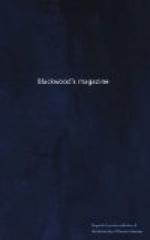* * * * *
THE LAST OF THE SHEPHERDS.
CHAPTER I.
I wish I had lived in France in 1672! It was the age of romances in twenty volumes, and flowing periwigs, and high-heeled shoes, and hoops, and elegance, and wit, and rouge, and literary suppers, and gallantry, and devotion. What names are those of La Calprenede, and D’Urfe, and De Scuderi, to be the idols and tutelary deities of a circulating library!—and Sevigne, to conduct the fashionable correspondence of the Morning Post!—and Racine, to contribute to the unacted drama!—and ladies skipping up the steepest parts of Parnassus, with petticoats well tucked up, to show the beauty of their ankles, and their hands filled with artificial flowers—almost as good as natural—to show the simplicity of their tastes! I wish I had lived in France in 1672; for in that year Madame Deshoulieres, who had already been voted the tenth muse by all the freeholders of Pieria, and whose pastorals were lisped by all the fashionable shepherdesses in Paris, left the flowery banks of the Seine to rejoin her husband. Monsieur Deshoulieres was in Guyenne; Madame Deshoulieres went into Dauphine. Matrimony seems to be rather hurtful to geographical studies, but Madame Deshoulieres was a poetess; and in spite of the thirty-eight summers that shaded the lustre of her cheek, she was beautiful, and was still in the glow of youth by her grace and her talent, and—her heart. Wherever she moved she left crowds of Corydons and Alexises; but, luckily for M. Deshoulieres, their whole conversation was about sheep.
The two Mesdemoiselles Deshoulieres, Madeleine and Bribri, were beautiful girls of seventeen or eighteen, brought up in all the innocent pastoralism of their mother. They believed in all the poetical descriptions they read in her eclogues. They expected to see shepherds playing on their pipes, and shepherdesses dancing, and naiads reclining on the shady banks of clear-running rivers. They were delighted to get out of the prosaic atmosphere of Paris, and all the three were overjoyed when they sprang from their carriage, one evening in May, at the chateau of Madame d’Urtis on the banks of the Lignon. Though there were occasional showers at that season, the mornings were splendid; and accordingly the travellers were up almost by daylight, to tread the grass still trembling ’neath the steps of Astrea—to see the fountain, that mirror where the shepherdesses wove wild-flowers into their hair—and to explore the wood, still vocal with the complaints of Celadon. In one of their first excursions, Madeleine Deshoulieres, impatient to see some of the scenes so gracefully described by her mother, asked if they were really not to encounter a single shepherd on the banks of the Lignon? Madame Deshoulieres perceived, at no great distance, a herdsman and cow-girl playing at chuckfarthing; and, after a pause, replied—




